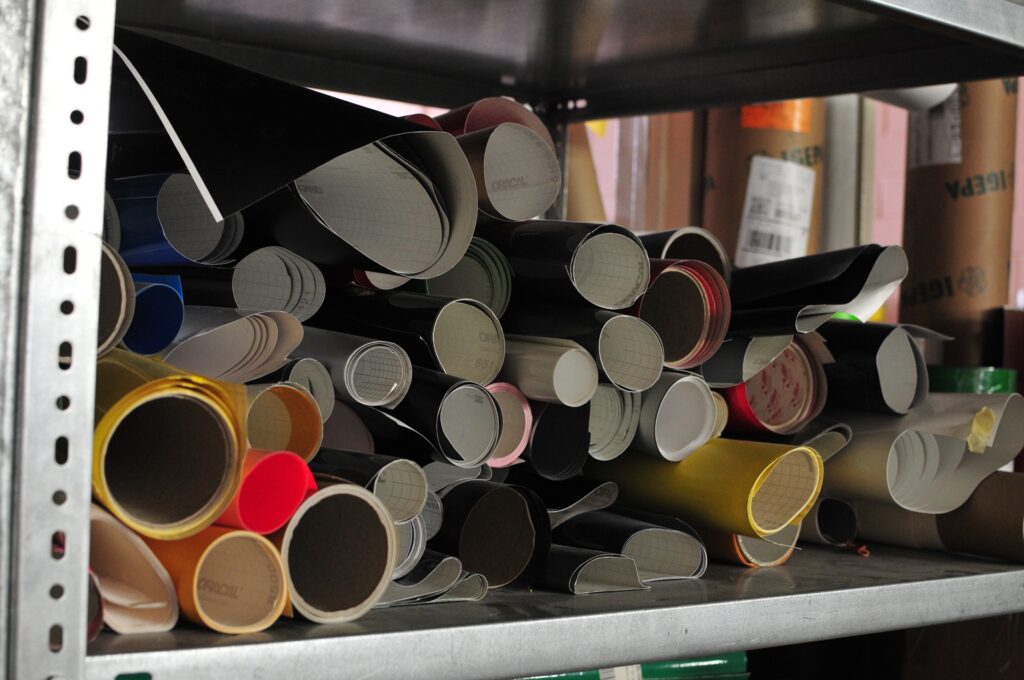Choosing the right material for your graphics project is crucial to achieving the best results in terms of durability, appearance, and performance. Whether you’re designing signage, vehicle wraps, or indoor displays, the material you select will directly impact the final outcome. In this comprehensive guide, we’ll explore the key factors to consider when selecting materials for your graphics project, helping you make informed decisions and ensure your graphics look exceptional and last for years to come.
Understanding Your Graphics Project
Before selecting a material, it’s essential to have a clear understanding of your graphics project’s requirements. Consider the following factors:
1. Purpose of the Graphics
Determine the primary purpose of your graphics. Are they intended for indoor or outdoor use? Will they be exposed to harsh weather conditions or high foot traffic? Understanding the intended use will guide you in choosing a material that meets your specific needs.
2. Location and Environment
The environment where your graphics will be displayed plays a significant role in material selection. Indoor graphics have different requirements compared to outdoor graphics. For example, outdoor materials need to withstand UV exposure, rain, and temperature fluctuations, while indoor materials may prioritize aesthetics and ease of installation.
3. Budget Constraints
Budget is always a consideration. Different materials come with varying costs, so it’s important to find a balance between quality and affordability. Investing in high-quality materials can lead to better performance and longevity, potentially saving you money on replacements and repairs in the long run.
Types of Graphics Materials
Here’s a breakdown of some common materials used in graphics projects and their characteristics:
1. Vinyl
Vinyl is one of the most versatile and widely used materials for graphics. It comes in various types, including cast vinyl, calendared vinyl, and specialty vinyl.
- Cast Vinyl: Known for its superior durability and conformability, cast vinyl is ideal for vehicle wraps and high-end signage. It adheres well to curved surfaces and lasts longer than calendared vinyl.
- Calendared Vinyl: This is a more economical option suitable for short-term applications such as promotional signs or temporary graphics. It is less flexible but still offers good performance for its price.
- Specialty Vinyl: Includes options like reflective, glow-in-the-dark, and metallic finishes. These are used for specific effects and applications where standard vinyl may not suffice.
2. Acrylic
Acrylic is a popular choice for high-quality, professional-looking signs and displays. It’s known for its glass-like appearance and can be easily cut, shaped, and colored.
- Advantages: Acrylic is durable, weather-resistant, and provides excellent clarity and gloss. It’s suitable for both indoor and outdoor use and can be backlit for added visual impact.
- Disadvantages: Acrylic can be prone to scratching and may not be as impact-resistant as other materials.
3. Aluminum
Aluminum is commonly used for outdoor signage and panels. It’s lightweight, strong, and resistant to rust and corrosion.
- Advantages: Aluminum is highly durable and weather-resistant, making it ideal for long-term outdoor applications. It also has a sleek, modern appearance.
- Disadvantages: Aluminum can be more expensive than other materials and may require additional finishing for optimal results.
4. Foam Board
Foam board is a lightweight material often used for indoor displays, presentations, and temporary signage.
- Advantages: It’s easy to cut and shape, making it ideal for custom designs. Foam board is cost-effective and provides a smooth surface for high-quality prints.
- Disadvantages: Foam board is not suitable for outdoor use as it is susceptible to moisture and physical damage.
5. Fabric
Fabric materials are used for banners, flags, and trade show displays. They offer a soft, flexible option that can be easily transported and installed.
- Advantages: Fabric is lightweight, portable, and can be printed with high-resolution graphics. It’s suitable for both indoor and outdoor use if treated for weather resistance.
- Disadvantages: Fabric may wrinkle or crease, and it may require special finishing for durability in harsh conditions.
Factors to Consider When Choosing Graphics Materials
1. Durability and Longevity
Evaluate how long you need the graphics to last and choose materials accordingly. For long-term applications, such as outdoor signage or vehicle wraps, opt for materials with proven durability and resistance to environmental factors.
2. Adhesion and Surface Compatibility
Ensure the material adheres well to the intended surface. Some materials are designed for smooth, flat surfaces, while others can conform to curves and irregular shapes. Check the manufacturer’s guidelines to ensure compatibility with your specific application.
3. Print Quality
The material should support high-quality printing with sharp, vibrant colors. Some materials are better suited for high-resolution prints and can handle intricate details, while others may not provide the same level of clarity.
4. Ease of Installation
Consider how easy the material is to install. Some materials may require professional installation, especially if they are large or complex. For DIY projects, choose materials that are easy to handle and apply.
5. Maintenance Requirements
Different materials have varying maintenance needs. Some may require regular cleaning or special care to maintain their appearance, while others are low-maintenance and easy to clean.
Making the Right Choice for Your Graphics Project
Selecting the right material for your graphics project involves balancing your project’s specific requirements with the characteristics of available materials. By considering factors such as durability, environment, budget, and print quality, you can make an informed decision that ensures your graphics achieve the desired impact and longevity.
GRAPHICS GROUP is your trusted partner for all your graphics needs. As a leading provider of comprehensive graphics solutions, GRAPHICS GROUP – The Group of Graphics Companies – offers expert guidance in choosing the right materials for your projects. Contact us today to learn more about our services and how we can help you achieve outstanding results with your graphics.

